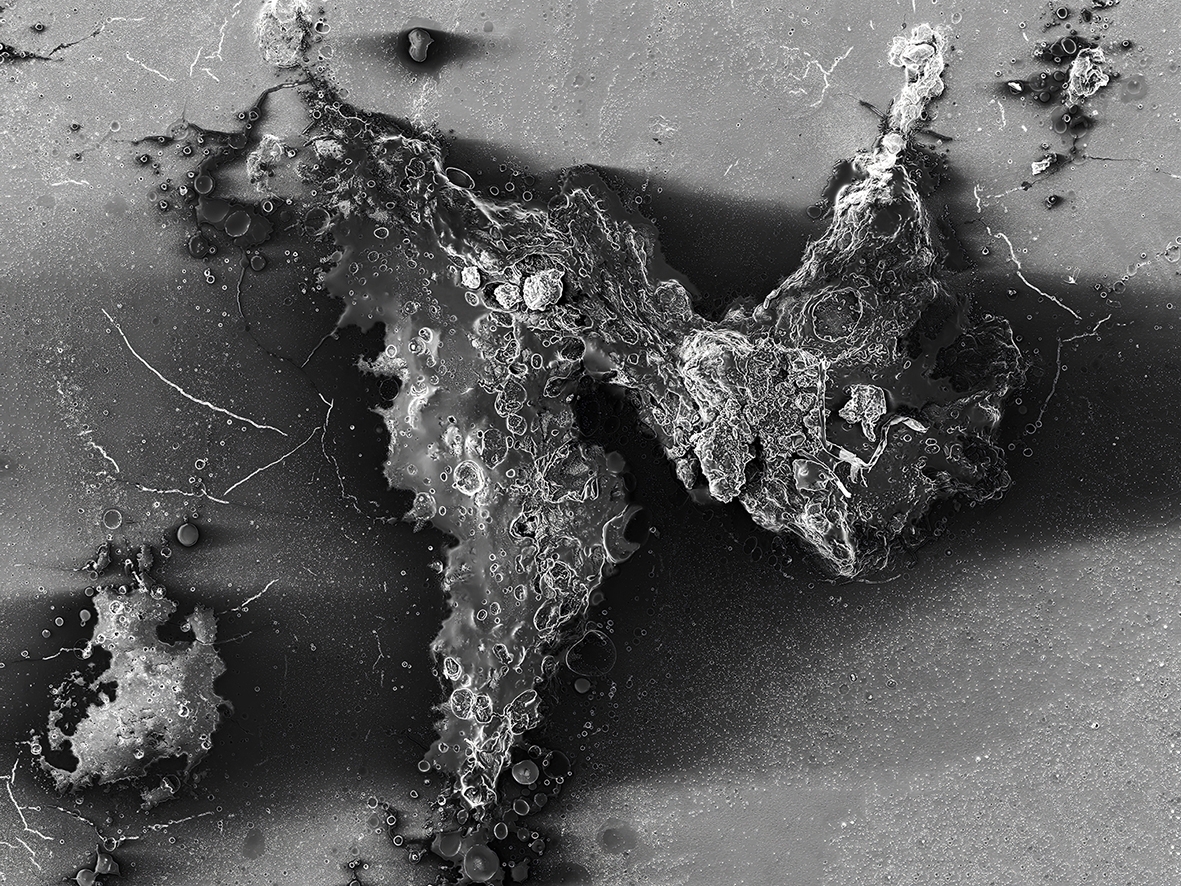The 1992 eruption of the Pinatubo volcano in the Philippines reduced the global average temper-ature by 0.4°C for approximately one year. This happened due to sulfur particles thrown into the stratosphere, which reflected 10% of the sun’s radiation back into outer space.
Ivar Veermäe: “The exhibition stems from a concept in geoengineering, stating that in theory it is possible to imitate the activity of volcanoes and thus reduce climate warming. One of the most scientifically studied processes describes the spraying of large amounts of aerosols into the stratosphere, where they would scatter the sun’s radiation and thereby reduce the amount of energy reaching the earth’s surface. It would be a deliberate intervention in the global cli-mate system, it would have to be done for about a few hundred years, and its fully realised form could not be interrupted without catastrophic consequences.
In the works of this exhibition, I have attempted to think about the scope of such process and the intricacies of biological and geological relationships. Photographic prints of close-ups of the sun* become a testing ground for the study of changes made by microscopic life on its surface. Metabolic transformations take place through microorganisms in human saliva brought into con-tact with an energy source and the surface of the image. Life on the images changes the visible throughout the exhibition and continues to alter it afterwards. I have taken a closer look at the same processes with an electron microscope (SEM), which underlines the morphological com-plexity of what is happening even more
The more abstract part of the exhibition is combined with a video work, which includes material from Effelsberg radio telescope combined with my conversations with several geoengineering experts. The design of one of the world’s largest fully steerable radio telescope is massive yet mechanically relatively simple. It is used to research distant territories far away from Earth, the formation of stars and the disappearance of matter into black holes. Also to detect radio waves from neighboring galaxies. I have chosen this as a research object in order to think about what can be perceived and understood through visibility? How visual simplicity fails to convey the complexity of such sets of relationships? Or how to think of inconceivable scales – some too grand and some too small?”
Ivar Veermäe (1982, lives and works in Berlin) has held solo exhibitions in Edith-Russ-Haus, Oldenburg, Germany, Gallery Im Turm in Berlin, Tallinn Art Hall
gallery, Hobusepea gallery, AV17 gallery in Vilnius, Cultural Center Belgrade, Tallinn City Gallery and elsewhere.
His works have been presented in the following group exhibitions: Riga Biennale, Venice Architecture Biennale, BIENALSUR in Buenos Aires, transmediale festival in HKW in Berlin, The Moscow International Biennale for Young Art, Bozar Brussels, ZKM in Karlsruhe, MMB gallery in Mumbai, KUMU, Tallinn Art Hall, File Festival in São Paulo, Pinnacle gallery in Australia. His video works have been screened at the Rencontres Internationales Festival in Paris and Berlin, Haus Der elektronische Künste in Basel, transmediale festival, e-flux.com, MoMa web platform, AND festival in Manchester, EMAF in Osnabrück and Virtual Memorial festival in Cambodia.
The artist has received different scholarships and research grants, the Kunstfonds Arbeitsstipendium, the Edith-Russ-Haus Media Art Grant, the Elsa-Neumann-Stipendium in Berlin and several awards from the Cultural Endowment of Estonia.
* The source of some of the images used in the exhibition: NASA
The artist thanks: Laura M. Hartman, Douglas MacMartin, Elspeth Spence, Forrest Clingerman, Wake Smith, Duncan McLaren, Masahiro Sugiyama, Valdek Mikli, Toomas Täht, family Veermäe, Anja Dreißig.
The exhibition is supported by the Cultural Endowment of Estonia.
Exhibitions in Draakon gallery are supported by the Cultural Endowment of Estonia, Estonian Ministry of Culture and AS Liviko.




